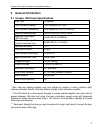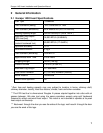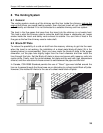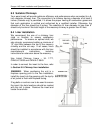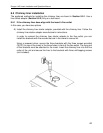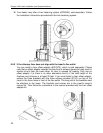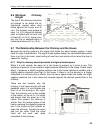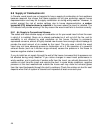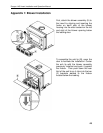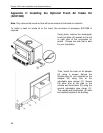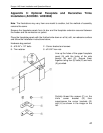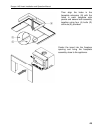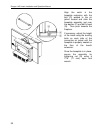
Escape 1400 Insert Installation and Operation Manual
44
8.8 Supply of Combustion Air
In Canada, wood inserts are not required to have a supply of combustion air from outdoors
because research has shown that these supplies do not give protection against house
depressurization and may fail to supply combustion air during windy weather. However, to
protect against the risk of smoke spillage due to house depressurization, a carbon
monoxide (CO) detector/alarm is required in the room where the insert is installed. The
CO detector will provide warning if for any reason the wood insert fails to function correctly.
8.8.1 Air Supply in Conventional Houses
The safest and most reliable supply of combustion air for your wood insert is from the room
in which it is installed. Room air is already preheated so it will not chill the fire, and its
availability is not affected by wind pressures on the house. Contrary to commonly
expressed concerns, almost all tightly-sealed new houses have enough natural leakage to
provide the small amount of air needed by the insert. The only case in which the wood
insert may not have adequate access to combustion air is if the operation of a powerful
exhaust device (such as a kitchen range exhaust) causes the pressure in the house to
become negative relative to outdoors.
If you do install an air supply through the wall of the house, be aware that its pressure can
be affected during windy weather. If you notice changes in wood insert performance in
windy weather, and in particular if smoke puffs from the insert, you should disconnect the
outdoor air duct from the insert and remove the duct. In some windy conditions, negative
pressure at the duct weatherhood outside the house wall may draw hot exhaust gases
from the insert backwards through the duct to outdoors. Check the outdoor air duct for soot
deposits when the full system is cleaned and inspected at least once each year.



